David Mealing – 10 October, 2021
Slavick's abstract yet realist style has evolved as much out of her working method as it has out of conscious aesthetic decisions. The artistic sensibility that infuses her best images is derived from mastering the fundamentals of photography, dispensing with aspects of it that might hinder her ability to take the kind of pictures she wants, and relating it to personal, social, political, and environmental concerns. Her photos demonstrate a natural ability to comprehend, absorb, and then undertake the process of the art of looking.
EyeContact Essay #44
For a close examination of Madeleine Slavick’s photographic contribution, let’s start by looking at Supermarket and Tree, a colour photograph taken from an empty lot in Wairarapa. It is an image that operates on a number of different levels. In one sense it is quite spare with little content, but in fact references not only its place, but a realist and abstractionist aesthetic. It embraces realism and pop art; colour field painting; minimalism; and abstraction. The title is ambiguous, and also intuitive. It is intelligently composed to represent a tree, but more realistically a hedge, or vine, clinging to life along a barren grey concrete block wall in a lifeless, soulless, concrete infested urban landscape.
The photograph is essentially four horizontal bands of colour, and reads as sky/tree & green painted surface/ lower wall/ground. Firstly, the top band of the sky is a light blue/white-coloured wash. Secondly, the next descending band of tree/hedge and green wall-painted surface is divided into a 1/3 and 2/3 scale. The lesser left-hand side of the horizontally structured image reads as a representational work, and depicts the tree/hedge in a dense dark green band, with vine-like tendrils reaching out and downwards to the concrete floor. The dominant vertical right-hand side of the image is pure colour field/abstraction and displays a fluorescent light green band of colour butting up against the right-hand side of the tree/hedge.
This colour field spread of light green counterbalances the dark green colour of the tree, but whereas the former is purely abstract, the latter reads almost as an allegory to life in an unforgiving landscape. The lower two bands are deadpan tonal grey variations representing the lower wall with three vine-like tendrils reaching up into the green tree/hedge above, as well as a bleed of light green paint from the band of colour above, and lastly, a band of unforgiving grey concrete.
The successful integration of all of these various elements, represents a brilliantly realised photo, and is a fine example of the quality of Madeleine Slavick’s work. It was exhibited, along with the work of her three sisters, in the Family Tree Whakapapa exhibition that was presented in Aratoi Wairarapa Museum of Art and History, and the Wallace Arts Centre Pah Homestead, Auckland in 2020 and 2021. (The show will later tour the United States.)
A chronology of Madeleine Slavick’s published, and unpublished, photographic work since the early 1990’s is indicative of an artist who has shown and displayed a sustained, committed, and wholly professional approach. Her style has evolved as much out of her working method as it has out of conscious aesthetic decisions. The artistic sensibility that infuses her best images is derived from mastering the fundamentals of photography, dispensing with aspects of it that might hinder her ability to take the kind of pictures she wants, and relating it to personal, social, political, and environmental concerns. Her photos demonstrate a natural ability to comprehend, absorb, and then undertake the process of the art of looking.
She only owns and uses one camera at a time, starting with a Pentax K1000 through a photography course at university; many beginners start with this model. She later acquired a Canon EO5-5 and used it for many years—together with Kodachrome film—until sadly it was stolen, and she was unsure what to do. Eventually, she went with a digital model that a photographer friend was using and let her try out. It broke down after a while and her next camera was gifted to her.
Born in the United States, Madeleine Slavick has lived most of her artistic life in Hong Kong and New Zealand, and in both locations, has received multiple awards and grants from arts councils. She has published and exhibited her work internationally across five continents, with solo shows in Hong Kong, Japan, Singapore and New Zealand. Her first was in Hong Kong in 1991. Slavick has also authored several books of photography, poetry and non-fiction, and helped found a small press publishing bilingual (Chinese and English) poetry. Having lived and worked in Hong Kong for 25 years, she identifies as Hong Kong Chinese, has a Chinese name 思樂維 which means ‘happy thinking’, and much of her writing has been translated into Chinese. She moved to New Zealand in 2012 and is currently living in the Wairarapa.
The earliest photography by Madeleine Slavick that I have is the beautifully produced six-page booklet titled Together (1996). It was an interactive project that was toured as a show to various types of locations to see how different people/communities would respond. People were invited to write their thoughts directly on to glass. Some of what was written was doodles or silliness, but interesting comments were also written and recorded. The twelve icon-like colour photographs are like precious gems or jewels, and in their cultural sensitivity and diversity mirror a comment by the photographer herself when describing this work as being ‘interested in the relationship between things; absence and presence in spaces and objects‘. There is always an inherent duality operating in Slavick’s approach to her art. This is manifested in her balancing minimal abstractionist concerns with realist ones. Of importance to Slavick in this instance is the pairing of her images, as much as the locations (Brazil, Hong Kong, Japan, U.S.A., and China).
Another project, her 1998 hardcover book entitled Round: Poems and Photographs of Asia, was a collaborative project with poet/photographer, Barbara Baker, that included images and poetry of 12 places around Asia. The poems and images in Round formed a meandering circle through Asia, beginning in Hong Kong and ending in China. The exhibition itself was also designed in a circle.
Slavick’s contribution to the book of 29 colour photographs covered Hong Kong, Korea, Japan, India, Mongolia, and China. There was a consistent thread of enquiry, and immersion in particulars of cultural diversity and difference in these photos. Also an alert attention to the particulars of a subject. The Hong Kong poet Leung Ping-kwan wrote that Slavick’s perceptive eye produces ‘strikingly unsaid imagery and moments of thought, and sometimes, what I like most, the things in between.‘
Colo(u)r/Colouring Words was a project undertaken in 2003/04 with several components. Slavick curated a community exhibition, inviting the public to contribute art or poetry linked to 10 colours: green, pink/purple, gold, white, black, blue, beige, grey, red, burnt orange. She also published postcards with poems printed with Chinese translations by the poet Zheng Danyi. Later, a Toronto publisher made them into an electronic book and the title was changed to Colo(u)r which Slavick preferred. An audio/visual of Slavick reciting the poems was also made to accompany the viewer looking at the images. The photos are printed on a matt card, and highlight an emerging trend in Slavick’s practice of interpreting objects from the point of view of an astute observer (as seen in the pink card image in particular, of three people photographed from the back in a subway train).
Other postcard photos include a close-up cropped image of a leaf (green); a dusk sky through a partly veiled curtained window (white); a long bench seat (beige); and a stool placed outside an entrance to a building (burnt orange). Throughout several of these images there is a sense of mystery and intrigue. With two exceptions they are totally devoid of people, yet they hint at a repose which is not necessarily permanent.
Slavick’s third published book of poems and photographs, delicate access (2004), is interesting from the point of view that there are only eight colour photographs, including the cover image, in the publication. They are all titled—delicate access (the cover image), hum city hum, placing asia, colo(u)r, and ricochet—and reflect a sensitive and quietly enquiring and observed view of subjects of interest. They appear as images with real or implied veils, as well as ways of looking into a culture and discerning fluid shifting interpretations of cultural difference. The quality of the printed photos is not of a high standard, but the real emphasis is on 88 poems written in English—with translations into Chinese by Luo Hui, a literary scholar at Victoria University of Wellington. To create a welcoming atmosphere for the public to view the photographs in and browse, Slavick brought her own furniture into the gallery.
Another book, Fifty Stories Fifty Images (2012), is Slavick’s farewell to Hong Kong. She left in her 50th year. This compact, small publication of images and words, describes a world of beauty and complexity. It is an elegy—pensive and reflective—to a life lived in harmony, with special insights into a culture that stimulated and nurtured her creative sensibilities. ‘The book of prose and photography presents insects, high rises…laughter and abstractions, and the poetry, poverty, and generosity of Hong Kong‘. Collectively, the 50 photographs in this book represent the best of Slavick’s photography.
In the exhibition 香 HONG 港 KONG 嗓 SONG, first shown at the Aratoi Wairarapa Museum of Art and History (2015), Slavick again brought together Hong Kong photographs. She says that the exhibition title rhymes in both Cantonese and English: 香 is pronounced ‘heung’ and means fragrant; 港 is ‘keung’ for harbour (香港 Fragrant Harbour is the Cantonese name for Hong Kong) and 嗓 is pronounced ‘seung’ and can mean voice or throat. This seems fitting considering the several people’s movements over the past decade.
The exhibition draws ‘attention to the many characteristics of Hong Kong—the natural beauty and the pollution, the rural and the urban, insects and high rises, grit and wealth‘. More than that, they confirm the veracity of Slavick’s own words in describing her personal view and approach. She seeks ‘a compelling sense of strangeness in her imagery, a placelessness: I want there to be questions, quiet ones. I seek movement in the composition, sound but not noise, balance but not complacency.’ (This exhibition was also shown at Wallace Arts Centre and Depot Artspace in 2015-16.)
An exhibition of Slavick’s photographs of China, RED, was held at the Victoria University of Wellington Library in 2015, when she had the RAK Mason Fellowship at New Zealand Pacific Studio in Wairarapa. As you might expect, her images explored the tones and themes of red—and the red dust of history in urban China. Luo Hui, the translator of her poetry collection delicate access, curated this solo show as part of an exhibition series at the main library. The four images that I have seen from that show highlight the four aspects pinpointed by Slavick to demonstrate her approach, namely beauty, intelligence, complexity, and humour.
The project, My Body My Business, was a publishing collaboration in 2018 with Caren Wilton, an oral historian and writer, and Otago University Press, which commissioned Slavick to produce 16 photographs for inclusion. Subtitled New Zealand Sex Workers in an Era of Change, Wilton interviewed 11 former and current sex workers to speak frankly, in their own voices, about their lives in and out of the sex industry. Slavick photographed various relevant locations in The Hutt and Wellington. The photographic brief ‘was limited to photographing sites that are, or historically have been, associated with the sex industry or with sex worker activism‘—Slavick photographed in Wellington and The Hutt (Interior, Paris, pictured).
These photographs are aesthetically rigorous images. The tonal contrasts and consistent dark/light/black/white abstract compositions match the intent and purpose of the book. Again, the reproduction of the photographs disappoints, a view shared by Janet Bayly, a reviewer and photographer. The approach that Slavick has taken to her photographs is not inconsistent with her other work, in that even though it is a visual record that can raise a number of questions, it requires input and responses from the viewer to engage with the underlying substrata of her imagery, to provide answers around the project’s intent and purposes.
As stated above, Family Tree Whakapapa is a touring exhibition, with its most recent exhibition location (2021) being the Wallace Arts Centre, Pah Homestead, Epsom, Auckland. It features more than 70 artworks—the photographic work of Slavick herself and the artwork of her three sisters. A central theme is ‘a critical commentary about the environmental degradation and disregard for nature in pursuit of profit. Through paintings, photographs and poetry, the Slavick siblings pay tribute to trees as both casualties and survivors of human-inflicted destruction‘. The preface includes parts of the 1995 poem What Kind of Times are These by feminist writer Adrienne Rich which the artists present as a reply to a 1940 poem by Bertolt Brecht, which theorised that it was ‘almost a crime‘ to talk about trees in a time of ‘so many horrors‘. Rich’s poem answers: ‘so why do I tell you/anything? Because you still listen, because in times like these/to have you listen at all, it’s necessary to talk about trees‘.
Slavick poses that perhaps ‘Family Tree Whakapapa’ will help people gain a deeper respect for the natural world. We have this idea of nature as this romantic backdrop that’s disconnected from humans, or being neutral and apolitical. In fact, power and politics are imprinted on our landscape. Nature has become another marginalised community. We wanted to offer a contemplative space where people can appreciate the beauty of the world and, hopefully, come up with solutions‘.
Madeleine Slavick’s body of work in Family Tree Whakapapa focused on trees and greenery in urban landscapes which are obscured and forgotten as the concrete stretches and inflates into natural spaces. The photographs are statements that demonstrate an informed awareness of contemporary visual art practice. Her understanding and appreciation of abstraction and realism has led her to create strongly individual and original works of art. Supermarket and Tree detailed above is a definitive work in Slavick’s oeuvre. This image was recognised as such by Slavick, being exhibited twice in the same exhibition, on its own and also in Lattice (pictured), a collection of 13 framed photographs that is her pepeha (Māori word meaning a way of introducing oneself). Taken over several years, the photographs encapsulate her major aesthetic concerns and significant personal relationships. Also, her deep connection to the places she’s from, her whakapapa, namely Germany, Hong Kong, United States, and Wairarapa—and that abstract, yet real, place called poetry.
David Mealing
Sources:
A list of books, catalogues, and articles cited in the text, as a result of consultation between the writer and Madeleine Slavick, by email or phone, during the preparation of this essay.
Together, booklet produced for the exhibition in Hong Kong and Singapore in 1996.
Round: Poems and Photographs of Asia, Madeleine Slavick and Barbara Baker, book published by Asia 2000 Ltd, Hong Kong 1998.
colo(u)r/Colouring Words, postcards published by Madeleine Slavick with Chinese translations by Zheng Danyi 2003/04.
delicate access, poems by Madeleine Slavick with translations into Chinese by Luo Hui, book published by Sixth Finger Press, Hong Kong 2004.
Fifty Stories Fifty Images, Madeleine Slavick, book published by MCCM Creations, Hong Kong 2012.
Red, see https://www.wgtn.ac.nz/ci/documents/annual-reports/CI-Annual-Report-2015-For-Web-final.pdf
My Body My Business: New Zealand Sex Workers in an Era of Change, Caren Wilton with photographs by Madeleine Slavick, published by Otago University Press, Dunedin 2018.
Bayly, Janet, ‘Exposure’, a review of the book My Body My Business, pages 42-50, initially commissioned by Photo Forum 2018.
Kavanagh-Hall, Erin, ‘Sisters add Whakapapa to Work’, Wairarapa Times-Age, 05.05.2021. See https://times-age.co.nz/sisters-add-whakapapa-to-work/
Olsen, Jen, ‘Family Tree Whakapapa Exhibition is a Treasure’, Featherston Phoenix, Feb. 2021
Slavick, Madeleine, email responses in addressing the questions posed by the writer—a short commentary about your personal view and approach to your photography and the cameras you used taking photographs. 27.06.2021.
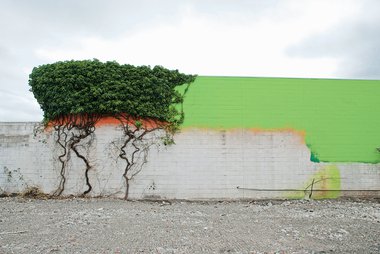
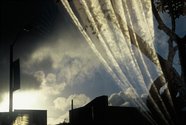
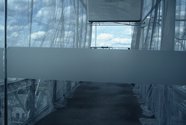

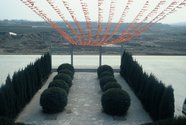
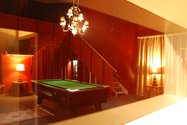

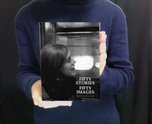

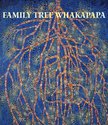

 Two Rooms presents a program of residencies and projects
Two Rooms presents a program of residencies and projects Advertising in this column
Advertising in this column
This Discussion has 0 comments.
Comment
Participate
Register to Participate.
Sign in
Sign in to an existing account.